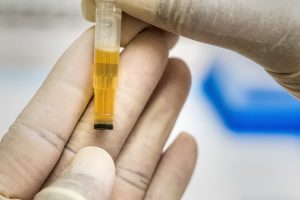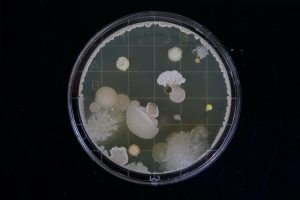Yeast infections are a common condition that many women experience at some point in their lives. One of the most noticeable and often concerning yeast infection symptoms is discharge, which can vary in color and consistency.
Understanding the different colors of yeast infection discharge is essential for proper diagnosis, treatment, and peace of mind. In this article, we will explore the various hues your discharge may take on during a yeast infection, offering compassionate guidance to help you navigate this frustrating and sometimes confusing aspect of feminine health.
Yeast infection discharge color as a symptom
Yeast infection discharge can vary in color, often ranging from white to pale yellow or even grayish in appearance. This color change is typically due to an overgrowth of yeast that disrupts the natural balance of bacteria in the vagina.
While these lighter shades are commonly associated with yeast infections, it’s important to note that each woman’s experience may differ.
Therefore, other colors, such as green or brown discharge, might indicate a yeast infection and signify another underlying condition, requiring further evaluation by a healthcare expert.
Observing changes in the color of your vaginal discharge can provide valuable insights into your body’s health. Paying attention to these variations and seeking medical advice allows for timely treatment and relief from symptoms caused by a yeast overgrowth infection.
Recognizing Normal and Abnormal Discharge
Recognizing normal and abnormal vaginal discharge is crucial in maintaining feminine health. While it is common for women to experience some form of discharge, specific colors can indicate underlying issues.
Regular discharge is usually clear or white in color and has a mild odor or no smell. However, if the color shifts towards yellow, greenish, or grayish or has a strong foul odor, it may indicate an infection or other reproductive health problem.
Understanding these differences can help women seek appropriate medical care and take necessary precautions. It is important not to panic when experiencing irregular discharge but instead seek professional guidance for diagnosis and treatment options.
Understanding Yeast Infection and Discharge
Yeast infections are common among women, and the color of the discharge is one of the most noticeable symptoms. The color and consistency of vaginal discharge can vary, often causing concern and confusion.
Proper diagnosis, effective treatment options tailored specifically for each individual’s needs, and emotional reassurance are crucial for women seeking expert guidance when dealing with a yeast overgrowth infection-related discharge issue.
Normal Vaginal Discharge
Vaginal discharge is a natural and healthy occurrence in women. It serves as the body’s way of keeping the vagina clean and free from infections. The consistency, color, and amount of normal vaginal discharge can vary during the menstrual cycle, with increased amounts occurring during ovulation or hormonal fluctuations.
Typically, regular discharge is clear or milky white in color, odorless, or faintly smelling musky. However, it is vital to be aware of any changes in your vaginal discharge that may indicate an underlying issue, such as a yeast overgrowth infection.
Yeast overgrowth infection discharge may appear thicker than usual and have a cottage cheese-like consistency. It can also range from white to yellowish-gray, with an unpleasant odor similar to bread or beer due to an overgrowth of Candida fungus.
Suppose you notice any abnormal symptoms like itching, a burning sensation while urinating or having sex, along with watery discharge or changes in the texture and appearance accompanied by a foul smell. In that case, seeking medical attention for proper diagnosis and treatment options for a yeast overgrowth infection is advisable.
Regular vaginal discharge characteristics
Yeast infection discharge can vary in color, texture, and smell. In most cases, the discharge is white or creamy in color and has a thick, cottage cheese-like consistency. It may also have a strong smell similar to bread or yeast.
However, it’s important to note that not all women experience these exact discharge characteristics during a yeast overgrowth infection.
Sometimes, the discharge may be thin and watery, with no noticeable odor. The color can range from a clear discharge to slightly yellow, greenish-yellow or gray discharge. This type of discharge is often associated with more severe infections or other underlying medical conditions.
It is essential for women experiencing any changes in their vaginal discharge to seek medical attention for an accurate diagnosis and appropriate treatment.
While yeast infections are common and generally easy to treat, consulting a healthcare expert for proper guidance based on individual symptoms and circumstances is always best.

Yeast Infection Discharge Color and What They Mean
Yeast infection discharge color and consistency can vary, offering valuable clues about the nature of the infection. The most common color is white, which usually indicates a mild yeast overgrowth.
However, if the discharge appears yellow or greenish, it may indicate a urinary tract infection or sexually transmitted disease.
Bloody or pink discharge should also raise concern and prompt medical attention. This can be an early indication of cervical cancer.
Understanding yeast infection discharge colors is crucial for proper diagnosis and treatment. By paying close attention to these changes, women can seek appropriate medical advice promptly and avoid potential complications of vaginal infections.
White or cottage cheese-like discharge
White or cottage cheese-like discharge is a common symptom of yeast overgrowth infections. This type of discharge has a thick, lumpy texture similar to cottage cheese and is typically white in color.
It may also have a slightly sour discharge smell. This type of discharge indicates an overgrowth of yeast in the vaginal area.
While white or cottage cheese-like discharge can be concerning, it’s important to remember that yeast overgrowth infections are treatable with proper medical care.
If you experience this type of discharge along with itching, redness, and irritation around the vagina, it’s recommended to consult your healthcare expert for diagnosis and treatment options.
They can offer compassionate guidance and prescribe antifungal medications or suggest other remedies to help alleviate symptoms and restore balance to your vaginal health.
Yellow or greenish discharge
Yeast infections can cause discharge that is yellow or greenish in color. This type of discharge may be a sign of an infection, as it can indicate the presence of bacteria. It is essential to seek medical attention if you notice this type of discharge, as it could be a symptom of a more severe infection.
Having yellow or greenish discharge can be distressing and problematic, but it is essential not to panic. With proper diagnosis and treatment, yeast overgrowth infections are typically easy to manage and resolve.
Consulting a healthcare professional will help determine the underlying cause and guide you toward a practical solution for your symptoms.
Remember, understanding the different colors of yeast overgrowth infection discharge can provide valuable insight into your condition and enable you to take proactive steps toward recovery.
When to see a doctor
If you are experiencing a yeast overgrowth infection and notice any changes in the color or consistency of your discharge, it is vital to see a doctor. While some variation in vaginal discharge may be expected, specific colors can indicate an underlying issue that requires medical attention.
It is crucial to seek professional help if your discharge has turned greenish, grayish, or yellowish, as these colors can signify a more severe infection or other gynecological condition.
Additionally, suppose you experience intense itching, burning sensation during urination, abdominal pain, unpleasant odor, and abnormal discharge. In that case, it is recommended to consult a healthcare provider promptly.
Neglecting these symptoms could delay proper treatment and potentially lead to further complications. Remember that seeking medical advice for any concerns regarding your reproductive health is always advisable to diagnose and effectively manage yeast overgrowth infections accurately.
Read also: Why You Can Get A Yeast Infection From Antibiotics
Frequently Asked Questions
While the most common color associated with yeast infection discharge is white or creamy, it can have an orange tint. This particular hue may be indicative of underlying factors such as bleeding or the presence of blood in the vaginal area.
It is important to note that any unusual color should be closely monitored and immediately discussed with a healthcare expert.
A white vaginal discharge is a common symptom of a yeast infection. This happens because the overgrowth of Candida, a fungus that naturally resides in the vagina, leads to an imbalance in the vaginal flora. The excess growth can cause irritation and inflammation, leading to the production of more discharge.
The white color of the discharge is due to dead skin cells, mucus, and possibly clumps or chunks from the yeast itself. It may have a thick consistency similar to cottage cheese or appear thin and watery.
Yeast overgrowth infections can cause vaginal discharge to appear in various colors, but it does not resemble poop. Women need to understand the different hues their discharge may take on during a yeast overgrowth infection, as it can help with diagnosis and treatment.
It is normal for the texture to be clumpy or lumpy, similar to curdled milk. However, if the discharge appears brown or has a strong odor that resembles feces, it is advisable to consult a healthcare expert as this could indicate another underlying condition.
Yeast overgrowth infection discharge can come in various colors, including yellow and green. While it is natural to feel concerned when you notice these colors, it’s essential to understand that they can indicate different things.
Yellow or green discharge during a yeast infection may suggest the presence of other bacteria along with the yeast, potentially indicating an underlying condition such as bacterial vaginosis or trichomoniasis. This highlights the importance of seeking a proper diagnosis from a healthcare provider for accurate treatment.
It’s essential not to panic or self-diagnose based solely on color alone but instead, consult with a medical professional who can provide guidance and compassionate support throughout this process.
Yeast infection discharge can vary in color, but it typically appears white or yellow. The color of the discharge is usually accompanied by other symptoms such as itching, burning, and a strong odor.
White discharge is commonly seen with yeast infections and can consistently resemble cottage cheese. This type of discharge indicates an overgrowth of Candida yeast in the vagina.
While yellow discharge is less common with yeast infections, it can still occur. Yellow vaginal discharge may be a sign of a more advanced or severe condition that requires medical intervention. It could indicate the presence of additional bacteria along with the yeast in the vaginal flora.





